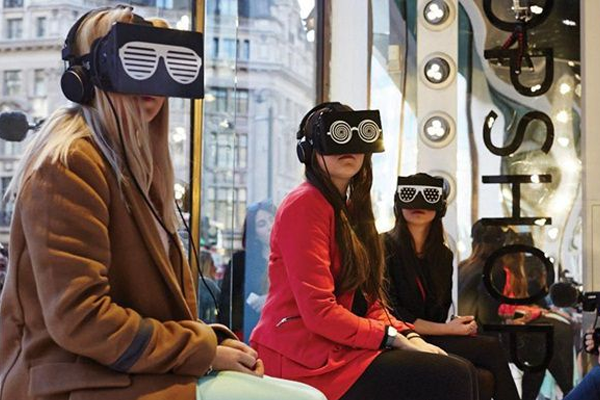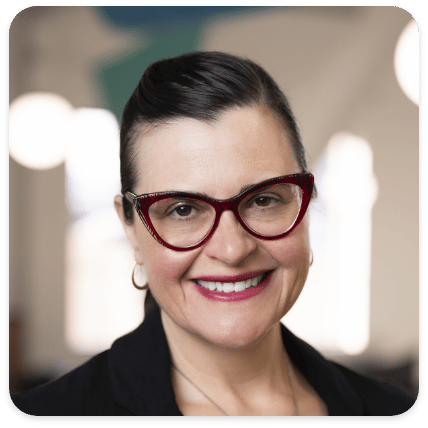
Who is creating the best Virtual Reality marketing experiences?
Virtual Reality is emerging as a powerful marketing tool, and several innovative brands have found the secrets to an effective Virtual Reality experience, creating campaigns that engage and delight shoppers while increasing sales.
Gartner predicts that Virtual Reality marketing is positioned at a vital transition point: the beginning of a growth cycle. When a new marketing technology gains traction, brands have the opportunity to capture a new kind of moment with shoppers, to create a wow factor that leaves a lasting impression, and establish themselves as leaders in their industries.
How 5 top brands have created experiences using Virtual Reality marketing to stand out from the crowd
Volvo Reality: XC90 Virtual Reality test drive
Beautifully designed, Volvo Reality moves beyond delivering a singular Virtual Reality driving experience – the individual episodes also build a compelling narrative.
Volvo smartly planned for multiple levels of distribution: the experience is optimized for Google Cardboard, but it’s also available broadly on smartphones with a video-only experience so fans can view with the hardware they have available. Volvo reports reaching 238 million media impressions, including being featured in PCMag and FastCoCreate.
The North Face VR experience
Drawing in shoppers that live for outdoor thrills, The North Face VR delivers a unique brand experience that puts viewers at the center of an adventure, making them feel like they’re climbing to new heights at Yosemite National Park. The experience was built for Google Cardboard, available via Google Play.
The North Face VR experience generated a lot of attention with its SXSW debut. Coverage in Washington Post, Chain Store Age, Digiday, and Chicago Tribune established The North Face as a brand that is pushing the envelope in retail Virtual Reality experiences. The experience quality is limited by the current capabilities of users’ devices, but for a limited-time campaign, The North Face successfully grabbed the attention they wanted.
Lowe’s Holoroom
The Lowe’s Innovation Lab created the Lowe’s Holoroom 3D showroom to re-imagine the way shoppers select products, transforming the browsing process into an engaging design experience. Built with VisualCommerce™ 3D Virtual Reality Design Studio and Showroom, the Holoroom experience serves up thousands of different models that shoppers can use to design their perfect space.
Using Virtual Reality compose tools on iPad and a Holoroom installation for full-scale and up-close viewing in Augmented Reality, the Holoroom was included in the CES 2015 Best of Tech by Digital Trends and won the Best Enterprise Solution award at Augmented World Expo.
Marriott Hotels Virtual Travel Teleporter
Marriott created a sense of “Virtual Reality travel” for guests, using an Oculus Rift VR to make viewers feel like they were transported to Marriott hotels across the country. The Virtual Reality Teleporter campaign encouraged participants to share their experiences with the tag #GetTeleported. Using the Oculus Rift VR headset inside a specially-made booth, Marriott goes a step further to being fully immersive with a 4D “sensory experience” that includes mist and warm air for exotic destinations.
Although it was a short campaign with limited physical reach, Marriott caught the attention of both tech (Wired) and travel press (Travel and Leisure), effectively building their brand and enticing viewers to book their next vacation.
Art of Patrón Virtual Reality experience
Taking a bee’s-eye view, Patron used 3D video captured with a drone camera to tell the rich story behind the way their tequila is made. Speaking to Fortune, Patrón Spirits global chief marketing officer Lee Applbaum, suggests that “Virtual Reality paves the way to opening up a dialogue about how most anything is intricately produced.”
The company’s passion for quality and tradition behind tequila comes across in the experience viewed with an Oculus headset, on the website, or iPad. AdWeek sums up the experience as “seriously jaw-dropping.”
What makes these experiences shine?
Each of these top brands uses a different Virtual Reality technique, but the experiences share several common threads. They all stand out with strong creative concepts and each has a clear message to deliver. They blend age-old storytelling techniques together with the new tech of Virtual Reality devices. Each campaign has a strong distribution strategy that strikes a balance to create a high-quality VR experience for those with a headset, while making a taste of the experience widely available via video or mobile devices. The key element that sets these experiences above others is the element of control: users are able to create a design or move through the Virtual creation, becoming an active participant instead of a passive viewer. This ability to control the experience elevates a campaign into a compelling experience that increases a brand’s connection with shoppers.












